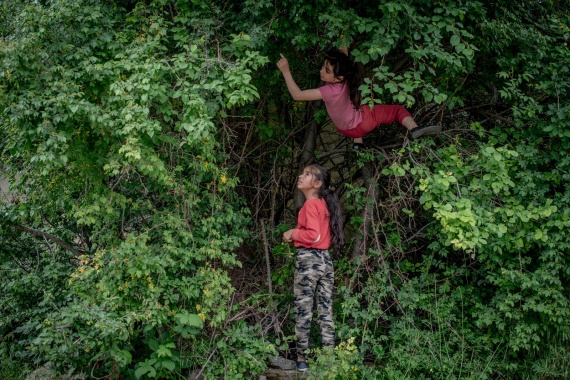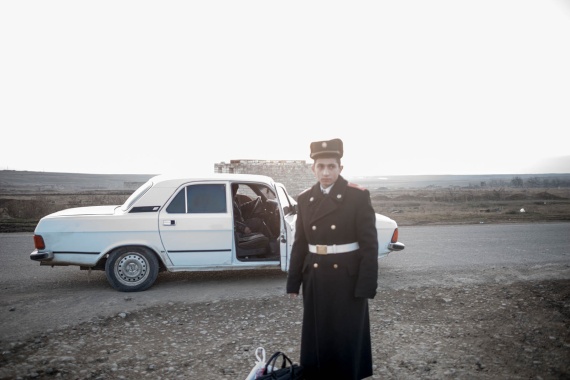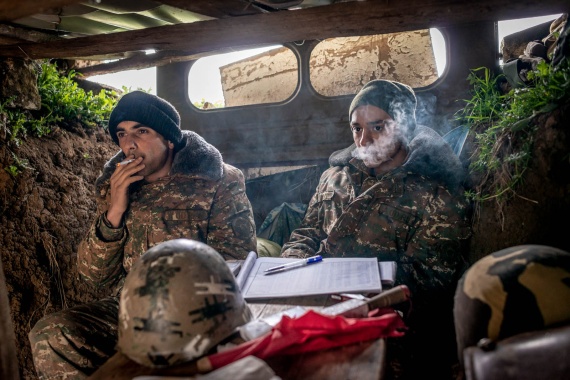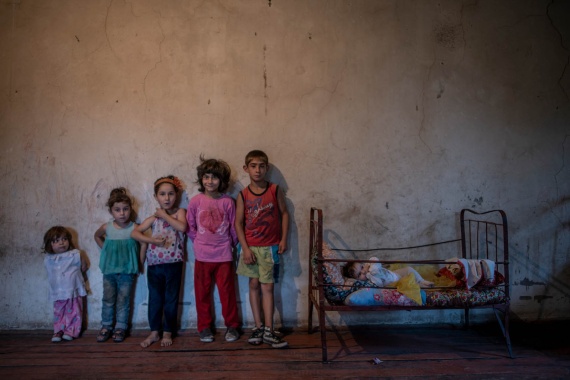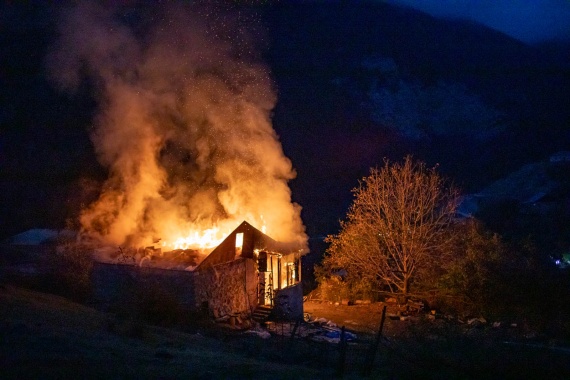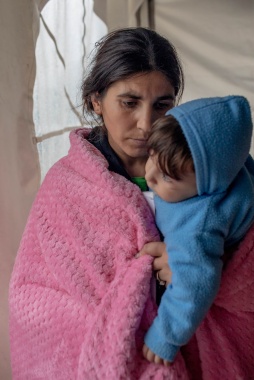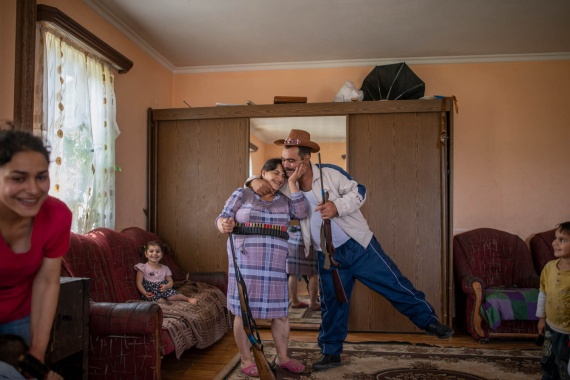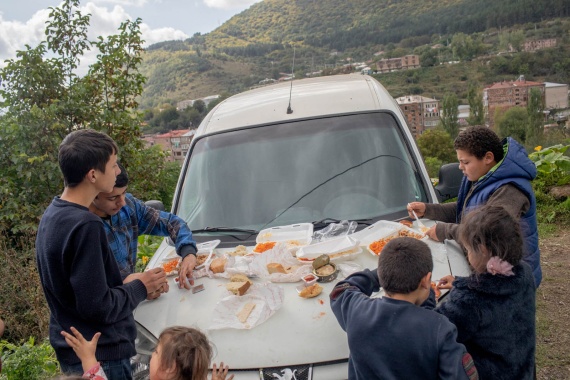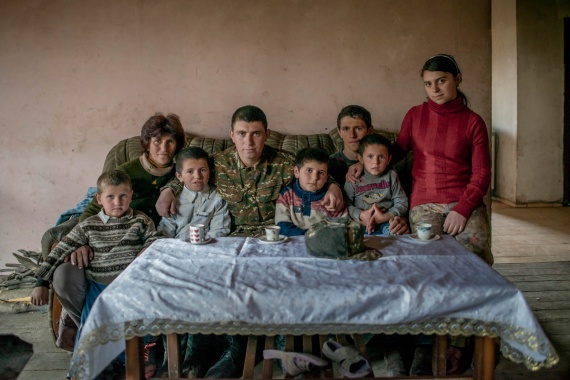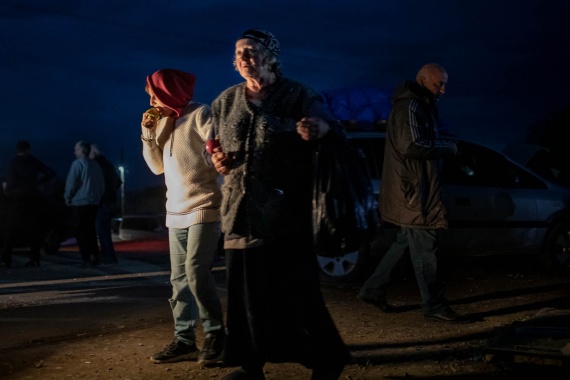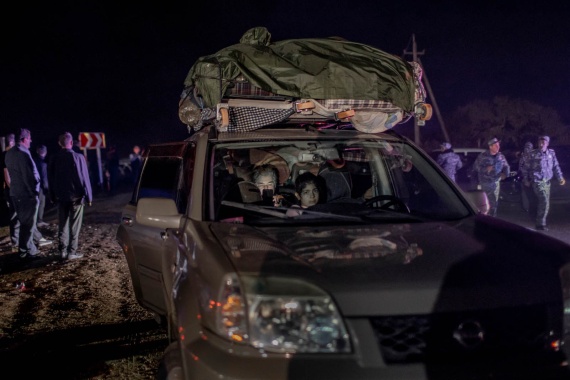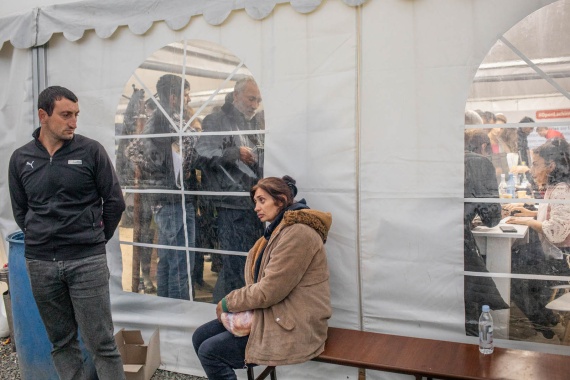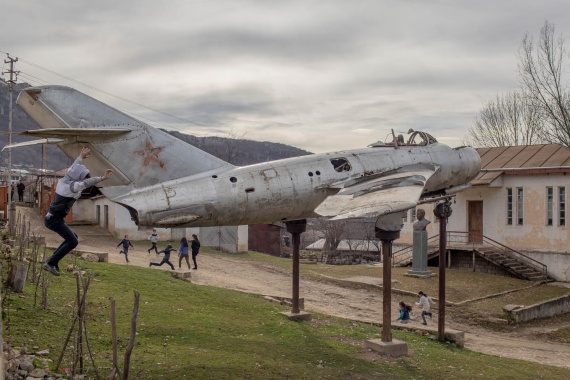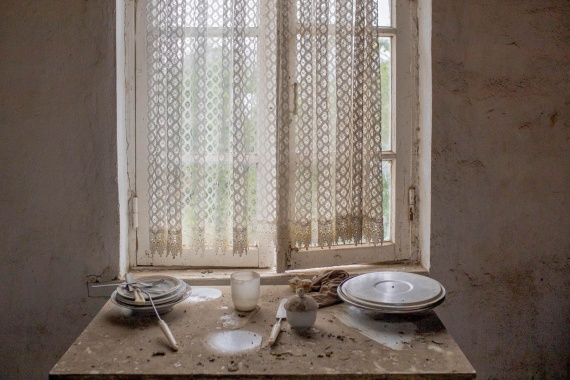Anush Babajanyan: Nagorno-Karabakh War and Exodus
The series by the Armenian photographer speaks of a region that has been nearly completely forgotten by the general public: the conflict, that has been on-going for decades, has led to the complete displacement of a whole group of the population. Babajanyan’s emotional and empathic images from Nagorno-Karabakh document the lives of the inhabitants with their threatened state and uncertain future.
The mountains stretch up creating a black silhouette behind the houses, so high, as if to be close to the sky, as if providing a resting place for the restlessly swirling clouds. But things have not been quiet for a long time in Nagorno-Karabakh, the “black garden” in the south-west region of the Lesser Caucasus. Since the collapse of the Soviet Union, a conflict over territorial claims and national affiliations has been smouldering here; the former autonomous land was inhabited by ethnic Armenians, while being claimed by Azerbaijan. “I started working in Nagorno-Karabakh in 2016 when a four-day war broke out between Azerbaijan and Armenian forces,” Anush Babanjanyan remembers. “As an Armenian living in Yerevan, the fate of the people in this region has always been close to my heart. The war made me realize that I had to begin working there.” To this day, the photographer dedicates herself to the Republic, which was forced to come to an end last year. In September 2023, Azerbaijani forces began a new offensive in Nagorno-Karabakh, causing over 100,000 people to flee – most of whom went to Armenia.
“This is one of the most important stories to me as an Armenian photographer. I feel a responsibility to document the realities that Nagorno-Karabakh Armenians live through, as it remains quite an under-reported issue.”
The “Nagorno-Karabakh War and Exodus” series tells of the fateful years between 2016 and 2023, sharing events that played out in the region during that time: from the four-day war in 2016 and the aftermath of the devastating conflict in the autumn of 2020, all the way to the arrival of Nagorno-Karabakh refugees on the Armenian border in 2023. The photographer not only documents situations pertaining to war; her attention is also on the subtle, often overlooked stories that define the inhabitants of Karabakh. “In this series, I’ve always wanted to include not only the long-lasting conflict but also the everyday life of those living in it,” says Babanjanyan. “I visited the borders and photographed in the capital Stepanakert and distant villages. I became friends with families and documented their life journeys over the years.”
“As a documentary photographer, it is important for me to be shortlisted for the LOBA with this particular story. It remains a fact that stories of the people of Nagorno-Karabakh are not told enough, and LOBA provides an opportunity for these stories to be seen.”
Babajanyan’s images offer testimony to an existence caught between hope and despair, home and a foreign land, possession and loss. In addition to pictures of the bleak reality, the fatal destruction and the military presence, she repeatedly breathes a colourful and cheery pinch of future into the obvious signs of doom: a baby is born; a family comes together for a group picture; children play. Things that would appear to reflect normality – if it were not for the constant longing for peace, and the powder keg that threatens to explode. Exodus: there is hardly any other word that sounds more shocking and brutal, carrying with it the sense of unwanted departure and an uncertain outcome. Consequently, the photograph of a family from Nagorno-Karabakh becomes an emotional reminder of time and space.
Anush Babajanyan’s series was submitted by Yasemin Elçi, who is among this year’s group of 80 international LOBA nominators.
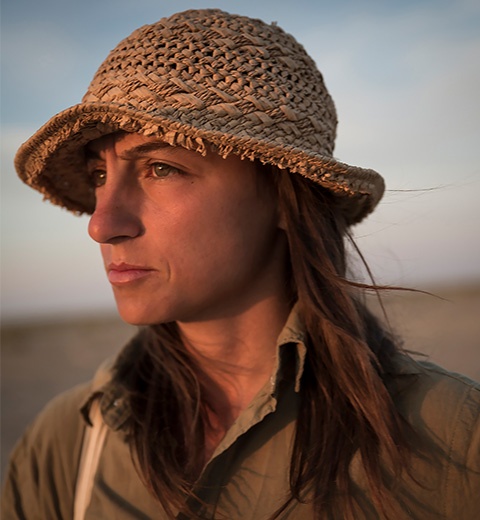
Anush Babajanyan
The Armenian photographer (born 1983) is a member of VII Photo and a National Geographic Explorer. She lives between Munich and Yerevan, and focuses her work on social stories and personal tales. She is the winner of the World Press Photo Long-Term Project Awards 2023, the Prix Photo Terre Solidaire 2023 and the Canon Female Photojournalist Grant 2019. Among others, her pictures have been published in The New York Times, The Washington Post and National Geographic.
Portrait: © John Stanmeyer
